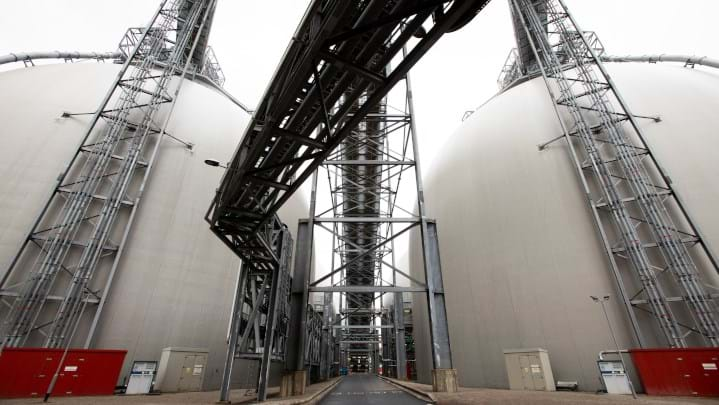Drax announces ambition to be world’s first carbon negative company by 2030

DRAX power station in North Yorkshire, UK, plans to become carbon negative by 2030 through its use of bioenergy with CCS.
Drax has converted four of its six coal units to use biomass, and a demonstration carbon capture project is running on one of the biomass units. The demonstration plant, which is run in collaboration with C-Capture, has been capturing 1 t/d of CO2 since February 2019. The CO2 is currently released into the atmosphere, but plans are to implement full carbon capture and storage on all units. Drax also plans to close its two remaining coal units by 2025.
Once the coal units are closed and the BECSS technology has been scaled up, Drax has said that it will be carbon negative as it will remove more CO2 from the atmosphere than it produces. This should be in place by 2030 and could capture and store at least 16m t/y of CO2.
Will Gardiner, CEO of Drax, said: “Having pioneered the use of sustainable biomass, Drax now produces 12% of the UK’s renewable electricity. With the right negative emissions policy, we can do much more, removing millions of tons of emissions from the atmosphere each year. The UK Government is working on a policy and investment framework to encourage negative emissions technologies, which will enable the UK to be home to the world’s first carbon negative company. This is not just critical to beating the climate crisis, but also to enabling a just transition, protecting jobs and creating new opportunities for clean growth – delivering for the economy as well as for the environment.”
Biomass as renewable electricity
The burning of biomass for electricity is classed as renewable energy under both UK and EU regulations. According to a report on the use of biomass from the Committee on Climate Change last year, the use of biomass for electricity generation should only occur with CCS. The European Academies’ Science Advisory Council (EASAC) also said in a recent report that coal-to-biomass projects should not be regarded as renewable energy unless a net reduction in emissions is possible within a decade.
While Drax should meet these criteria, there are concerns over the fact that burning biomass could exacerbate the climate crisis. A report by non-profit think tank Sandbag has identified 67 planned coal-to-biomass projects in the EU (this does not include Drax as it is already in operation). These would require 36m t/y of wood pellets, which is equal to current global wood pellet production. Burning this volume would require clearing 2,700 km2 of forest every year and would produce 67m t/y of CO2. The planned projects would only produce around 2% of the EU’s electricity needs.
The report makes policy recommendations that governments should focus on support for renewables that deliver immediate carbon reductions and that a full assessment of the biomass life cycle must be undertaken and compared with a baseline scenario so that the true effect of burning biomass can be understood.
A review paper published in Global Change Biology – Bioenergy earlier this year, based on work by EASAC, found that current policies don’t recognise that removing forests causes an initial increase in emissions and that the “payback period” can be decades or centuries before the CO2 is reabsorbed by trees. It also noted that carbon accounting allows countries importing biomass to count it as carbon neutral because it has already been accounted for as a land use change in the export country. This allows countries to say that burning biomass is carbon neutral even though it is releasing CO2 when it is combusted.
Another concern raised is that biomass conversion needs to be heavily subsidised, when renewables such as solar and wind power are much more economical.
Recent Editions
Catch up on the latest news, views and jobs from The Chemical Engineer. Below are the four latest issues. View a wider selection of the archive from within the Magazine section of this site.




